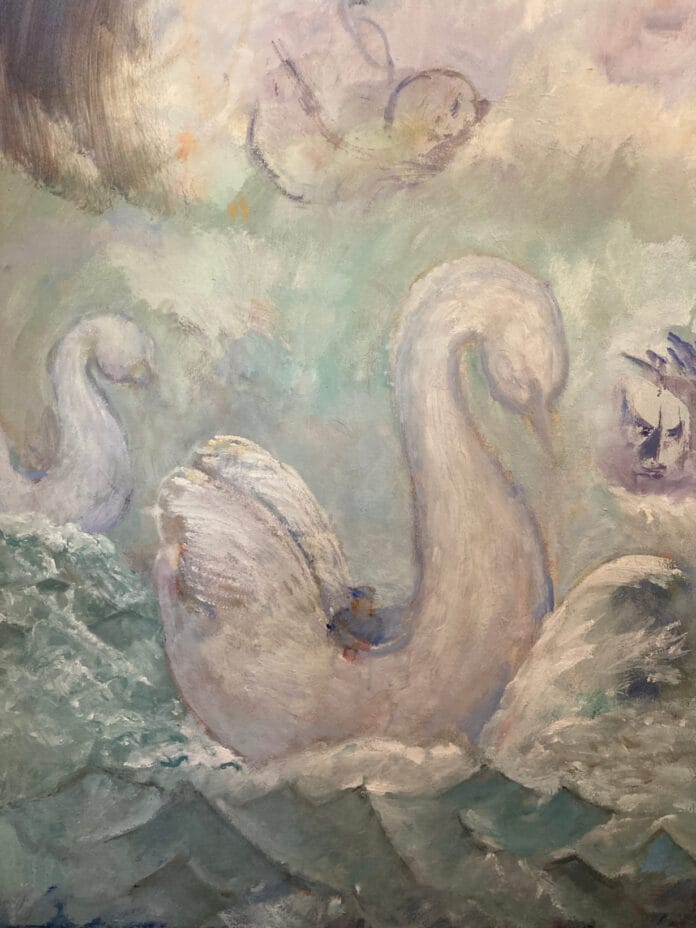Tim Murphy is an American abstract painter based in southern Arizona whose work has been exhibited nationally and internationally. Over the years, Murphy has gained recognition for his bold use of color, form, and movement, which collectively capture themes that resonate with the shared human experience. His paintings have been featured in exhibitions across the United States, including the Davis Dominguez Gallery in Tucson, Arizona; the William Havu Gallery in Denver, Colorado; the Lisa Kurtz Gallery in Memphis, Tennessee; the Harbor Gallery in Boston, Massachusetts; and the Peyton Wright Gallery in Santa Fe, New Mexico.
Murphy’s artistic reach has also extended beyond the United States. His works were shown at Centro D’Arte e Cultura in Brolo, Mogliano Veneto, Italy, bringing his abstract vision to European audiences. His inclusion in the book XXI Century Abstractions From The World: Paintings Exchange 2020–2021, curated by Livio Lopedote and Daniel N. Morri,s further situates his practice within a global dialogue on contemporary abstraction. This publication, available through Amazon, highlights Murphy’s place among a wide-ranging collection of abstract artists shaping the 21st-century landscape of art.
The Artistic Vision
At the heart of Murphy’s work lies a fascination with human experience, not in its literal representation, but in its emotional, spiritual, and psychological dimensions. Abstract art, by its very nature, resists fixed interpretation, and Murphy embraces this quality, allowing his viewers to engage with his paintings on deeply personal terms. His work often suggests movement and transition, speaking to the inner transformations that define human life.
Color is a central tool in Murphy’s visual vocabulary. Rather than functioning as mere decoration, it becomes a vehicle for emotion. Bold hues, subtle transitions, and carefully constructed contrasts are all harnessed to evoke states of mind, moments of tension, and flashes of resolution. His forms, sometimes structured, sometimes organic, reinforce the sensation of a journey, creating visual landscapes where one’s eyes and thoughts travel in tandem.
“2025”: A Meditation on Transition
Murphy’s painting 2025, an oil on canvas work, exemplifies his exploration of life as a continuous journey. In this piece, he seeks to capture what he calls “the space between leaving something and going to something else.” This liminal state, the uncertain interval between departure and arrival, is at once universal and deeply personal.
In 2025, Murphy uses abstract forms and layered color to convey both the tension and the possibility that exist in such moments of transition. The canvas becomes less a static surface and more a metaphorical space of movement. Viewers are invited to reflect on their own experiences of change: the moment of stepping away from what is known, the anticipation of stepping into what is new, and the emotions of fear, excitement, hesitation, or relief that accompany this passage.
The work does not dictate a single narrative. Instead, it functions as an open-ended meditation on transformation, allowing each viewer to project their own story onto the canvas. By doing so, Murphy highlights the timelessness of this journey, something every human being encounters, regardless of culture, geography, or era.
Abstraction as a Universal Language
Murphy’s art demonstrates the unique power of abstraction to speak across boundaries. While representational art often relies on cultural or contextual knowledge, abstract art can bypass such filters, appealing directly to emotion and intuition. In 2025 and his broader body of work, Murphy uses abstraction as a universal language, one that invites viewers from diverse backgrounds to connect with shared human experiences.
This approach is evident in his international exhibitions and inclusion in global collections. The themes Murphy addresses, transition, transformation, and the search for meaning, resonate universally, making his work accessible to audiences far beyond his native Arizona.
Rooted in Place, Reaching Beyond
Though Murphy’s art carries universal themes, his life and practice are grounded in the landscapes of southern Arizona. The region’s expansive horizons, shifting light, and natural contrasts subtly inform his aesthetic. Living in an environment where the desert stretches infinitely and the sky seems to dissolve into the earth, Murphy is acutely aware of both space and movement, two qualities that echo powerfully in his paintings.
At the same time, Murphy’s vision is not limited by geography. His participation in exhibitions across the United States and abroad reflects his desire to engage with audiences in multiple cultural contexts. Each showing creates a dialogue, situating his work within the larger conversation of contemporary abstraction.
The Journey Forward
As Murphy continues to develop his practice, works like 2025 serve as milestones in an ongoing exploration of human experience. His art does not provide easy answers but instead opens space for reflection. By focusing on themes of transition and movement, he offers a mirror to the inner journeys that define life itself.
In a world where change is constant, whether welcomed or resisted, Murphy’s paintings remind us that the in-between spaces hold their own beauty and meaning. The journey is not simply about where one begins or ends, but about the richness of the passage itself.
Conclusion
Tim Murphy stands as a contemporary abstract artist whose work bridges the personal and the universal. From his exhibitions across the United States and Italy to his inclusion in international publications, his art has earned recognition for its ability to capture the essence of human experience through color and form. His painting 2025 is a powerful exploration of transition, illustrating the liminal space between departure and arrival that every individual encounters.
By situating his work within both local and global contexts, Murphy demonstrates that abstraction remains one of the most potent forms of expression in today’s art world. His canvases are not just visual compositions; they are invitations to journey inward, to reflect on change, and to embrace the spaces in between.


